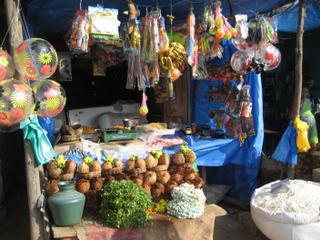KAAMKAJ
Riddhima J Shelat
Design intervention for traders and micro-businesses to help them revolutionise business practices.
http://riddhima.com/kaamkaj

Classes
Mobile Me(dia),Thesis
Today technology-based solutions need to address not only the problems on hand, but also devise solutions taking into consideration social, cultural, economical, and technologically factors that need to be conducive for the environment in which they are to be deployed. Mobile phones, like other ICTs, are not merely tools used to help connect individuals but have today empowered and strengthened the economically backward communities to create economic opportunities and increase social ties. The September 2002 issue of Harvard Business Review captured the essence of the report- Serving the World’s Poor, Profitably by CK Prahalad and Hammond, in this way :
By stimulating commerce and development at the bottom of the economic pyramid, multinationals could radically improve the lives of billions of people and help create a more stable, less dangerous world.
Mobile phones now offer an attractive solution to many rural poor individuals to use the phone for more than just communication due to its general accessibility. Looking at the phenomenal growth of mobile usage by lower income group people, rich information interfaces and services supported by MNCs will go a long way in sustainable economic growth. The mobile phone will play a very important role in stimulating this development and the KAAMKAJ project is once such attempt. I seek to use this compelling technological intervention to design, build and test a voice based service that caters to the needs of small vendors and micro-businesses.
Background
http://www.cks.in/mdr/Mobile%20Development%20Report_updated.pdf
Audience
My end user is an person who is running their own business and needs a tool to manage their business processes like accounts, ordering, tracking and so on. The project was directed towards micro businesses and street vendors in developing nations but initial feedback by local users has shown that this is relevant to anyone involved in "one-man show" type businesses.This service works on the concept of BOP (Base of Pyramid) which encourages larger MNCs and bigger companies to provide a support structure and technology intervention that will nurture businesses and people at the lower strata of the society. I believe that sustainable, successful businesses at the Base of the Pyramid will emerge only through such a process of mutual partnership and co-creation.
User Scenario
Raghu is a street vendor who moves from village to village selling clothing. At the end of a sale-day Raghu gives a missed call to the KAAMKAJ service on the number assigned to him. He immidiately receives a call back from the service that allows him to update his current inventory. He can also check on orders that he placed or track status of packages or just listen to updates from the Manufacturer. The Manufacturer has access to the system and receives orders and updates from the vendor via KAAMKAJ and sends him information back on the status via the KAAMKAJ message service.
Implementation
The system is going to be setup on the asterisk server and the user will have to give a miss call to the assigned number, in the case of running the demo at ITP, they will have to dial the extension and they will be able to interact with the system through voice and DTMF.
By stimulating commerce and development at the bottom of the economic pyramid, multinationals could radically improve the lives of billions of people and help create a more stable, less dangerous world.
Mobile phones now offer an attractive solution to many rural poor individuals to use the phone for more than just communication due to its general accessibility. Looking at the phenomenal growth of mobile usage by lower income group people, rich information interfaces and services supported by MNCs will go a long way in sustainable economic growth. The mobile phone will play a very important role in stimulating this development and the KAAMKAJ project is once such attempt. I seek to use this compelling technological intervention to design, build and test a voice based service that caters to the needs of small vendors and micro-businesses.
Background
http://www.cks.in/mdr/Mobile%20Development%20Report_updated.pdf
Audience
My end user is an person who is running their own business and needs a tool to manage their business processes like accounts, ordering, tracking and so on. The project was directed towards micro businesses and street vendors in developing nations but initial feedback by local users has shown that this is relevant to anyone involved in "one-man show" type businesses.This service works on the concept of BOP (Base of Pyramid) which encourages larger MNCs and bigger companies to provide a support structure and technology intervention that will nurture businesses and people at the lower strata of the society. I believe that sustainable, successful businesses at the Base of the Pyramid will emerge only through such a process of mutual partnership and co-creation.
User Scenario
Raghu is a street vendor who moves from village to village selling clothing. At the end of a sale-day Raghu gives a missed call to the KAAMKAJ service on the number assigned to him. He immidiately receives a call back from the service that allows him to update his current inventory. He can also check on orders that he placed or track status of packages or just listen to updates from the Manufacturer. The Manufacturer has access to the system and receives orders and updates from the vendor via KAAMKAJ and sends him information back on the status via the KAAMKAJ message service.
Implementation
The system is going to be setup on the asterisk server and the user will have to give a miss call to the assigned number, in the case of running the demo at ITP, they will have to dial the extension and they will be able to interact with the system through voice and DTMF.